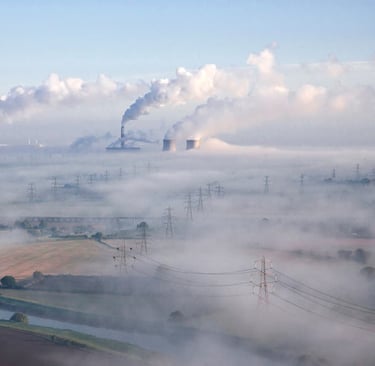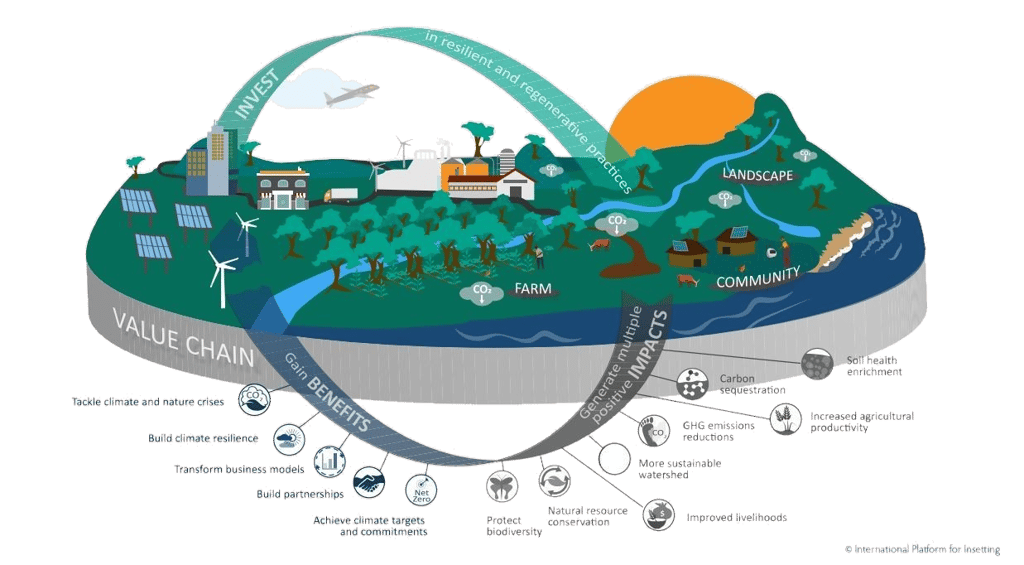Building in the Just Transition: carbon clouds and hidden systems
While carbon offsetting often faces criticism for contributing to industrial greenwashing, carbon insetting represents a shift towards introspection within the built environment sector. It acknowledges the detrimental effects of development and offers a framework to address existing impacts. Carbon insetting prioritises investments in supply chains capable of implementing nature-based solutions like agroforestry, renewable energy, and regenerative agriculture. This approach has the potential to significantly reduce the direct greenhouse gas emissions associated with the built environment, but does it go far enough?
BUILT ENVIRONMENTCARBON INSETTING
James Martin
5/7/20244 min read


In a recent discussion with the consultancy firm Buro Happold, we were introduced to their initiative called C:Lab – a programme committed to finding impactful solutions that “focusse[s] on exploring emergent disruption in the built environment”. As they described some of the many mechanisms they were exploring, we were asked what would we do with a transition fund. Specifically, a transition fund based on voluntary carbon credits as described in a 2023 report released by the UK Green Building Council (UKGBC). So we went away, had a think, and came up with a few ideas…
The report starts with the sobering fact that the built environment is directly responsible for 25% of all national greenhouse gas (GHG) emissions which equates to the combined pollution of all agriculture, aviation, and shipping in the UK. And while UKGBC do not explicitly talk about the amount of construction that would tip the UK’s carbon budget, they do argue through the report for greater action to be taken and call for developers to rethink how the sector currently operates.
Their primary focus is to recognise the differential between how much developers currently pay for the carbon they emit and its true cost - advocating to increase the sector's responsibility for carbon emissions in three key ways. Firstly, by raising the price of the compulsory carbon offsets through a more accurate pricing system. Secondly, to develop greater awareness around carbon offsetting and provide guidance on best practices, and thirdly, to explore the creation of a voluntary ‘transition fund’ that can reduce carbon emissions in indirect ways.
What’s interesting to us about this report, is that while there is a heavy focus on carbon offsetting, there is also a brief mention within the document of a more radical practice called carbon insetting.


While carbon offsetting has been notoriously slated for its role in industrial greenwashing, carbon insetting can be seen as a turn inwards; a recognition of the initial harm the industry causes and adopts a framework to reform its impacts. Carbon insetting is the investment in one's own supply chain which can implement nature-based solutions such as agroforestry, renewable energy and regenerative agriculture that can slash the direct GHG emissions of the built environment.
If we take a development that utilises a lot of timber as an example and assume the developer wanted to lead with best practice, instead of paying into a voluntary pot to offset the real carbon cost of the project, they could invest in regenerative forestry practices that would ensure the long-term survival of their timber supply - supporting the surrounding ecosystem of the stock, the health of the strength of the trees and the livelihoods that maintain the forest. Carbon insetting then, would not only future-proof their business but also drastically reduce the direct carbon emissions of all their future builds and the builds of all adjacent developers utilising the same resource. Imagine the ripple effects if the entire sector invested across their supply chains. Carbon insetting moves beyond the drive towards net zero and focuses on delivering true zero by regenerating the ecological and social systems that are harmed during the extraction process.
Although critical, upstream investment is not limited to regenerating depleted soil. It could also be invested in the development of circular initiatives, greener alternatives, or the supply chain of other developers that have less ability to inset. But perhaps more importantly, what’s missing from the carbon insetting framework is a deeper process to examine the ecological and social footprints of our material systems; one that considers both the historical and future implications of material use. And while carbon insetting is useful to start the conversation around climate collapse, inequality, and dispossession, the concept could be further built on by the inclusion of an independent decolonial framework.
In many ways, the focus on carbon emissions clouds the many other harmful aspects of the sector. Because of its complexity, the hardest part of understanding the social, ecological, and cultural impacts of any development, is having the time and expertise to analyse its context and systems. This is why any transition fund could be best spent on simply placing the development within its colonial context, analysing its extensive interconnecting systems and then making suggestions as to how the build could be more appropriate.
A decolonial framework could use the many insights from practices such as non-reformist reforms which could be included within the design review of any development. Asking key questions such as, does the development provide material relief? Who are the developers and how are their interests biased? How is their company owned and does this affect their social and ecological responsibility? How does this development reverse the concentration of land ownership? Does it enable new social relations to be enacted? Who is the development for, who does it exclude and will this need to be dismantled later? In short, who benefits?
The built environment is such an important landscape full of social relationships, ecological turmoil and entrenched power structures.


The built environment is such an important landscape for all of us to consider. Not least because it has such a low-reversibility factor; once a building is erected, the embedded power and social relationships are going to be upheld for a long time. Land is a common resource that has long been appropriated and extracted for private gain. If we do not implement a more inclusive process at the get go then communities will continue to be impacted by the dispossessing and extractive nature of privatisation.
Despite such a long road to fully reform the built environment, it is heartening to know that there are companies such as Buro Happold that want to invest in a socially and ecologically just world. The increase in climate awareness has created a level of public pressure that rewards developers to take on these leading practices, which in turn invests in wider society as well as the developers' own longevity. We should all welcome the UKGBC’s proposals, they are calling for greater responsibility and propose practical steps to drive climate action. However, if we understand the built environment as inseparable from climate action, then perhaps the next report could promote a deeper industry-wide analysis that unearths the complex social, ecological and power relationships that infuse its bricks and mortar.
